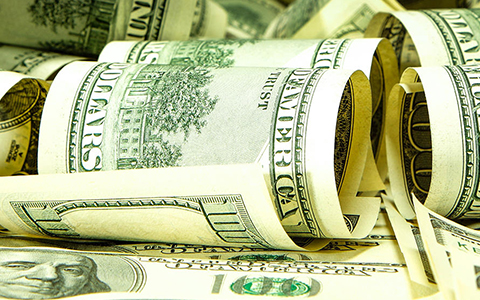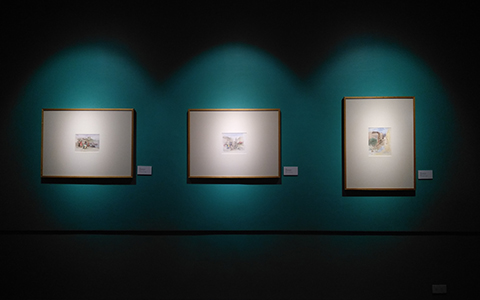-
 2023年瑞士投资项目汇总
2023年瑞士投资项目汇总
2023年瑞士投资项目汇总 导读 作为永久中立国,瑞士安全安定、法律健全、综合税率全球最低、国际化人才丰富。同时,瑞士金融业发达,融资便利且成本极低,贷款利率低至年化1%左右。因此,瑞士是一个颇受全球投资者青睐的国家。作为来自瑞士的专业家族办公室,雷梭勒不但拥有广泛、深入的瑞士各界人脉资源,同时也掌握着一些市场上难以获得的瑞士稀缺投资项目。我们将目前雷梭勒拥有独家授权在中国区寻找投资人的几个瑞士优质投资项目进行了汇总整理,以便您了解。 项目总览 项目一:CastleVD城堡庄园 报价3,000万瑞郎 项目简介城堡历史:建成于1802年,相继被欧洲多个颇具声望的家族和王室所有。城堡历任业主都身份显赫,目前业主为法国当地在酿酒业举足轻重的家族。地理位置:毗邻纳沙泰尔市中心的一处村庄;可观赏到纳沙泰尔湖的怡人景色。总占地面积:9.3万平方米总建筑面积:1,659平方米主建筑:433平方米,包含9间卧室、9间套内浴室、英文藏书房、影院包含物业:葡萄庄园、花园、马场、森林 项目二:瑞士彩弹射击项目Iron Mission 报价1,500万瑞郎 项目简介公司创立于2012年,将传统彩弹射击运动与现实增强技术相结合,以提升玩家体验。项目有自己开发的操作软件,并已获得专利,可在全球进行特许经营。项目用于28,000平米土地,扩建后的建筑面积可达1,800平米。项目适合团队建设、生存训练营、军队和警察训练等。目前数据库中有50,000个玩家。 财务状况新冠期间财务持平(接待8,000名玩家即可持平)。 投资结构以1,500万瑞郎出售100%股份。 项目三:来自法国的奢华皮具项目JLF 报价600万欧元(51%股权) 项目简介1945年在法国创立的手工皮具品牌,其主营业务是自有品牌JLF奢华高端皮具的开发和生产(B2C),以及生产知名第三方奢侈品品牌代工,特别是奢华表带和手提包(B2B)。全球员工800人。JLF在中国注册了公司实体,目前在北京和成都SKP商场开有门店。 财务状况(法国控股公司)2017-2019年:年均营业额3,760万欧元2020-2021年:年均营业额2,780万欧元(新冠疫情中)2022年:营业额3,560万欧元(新冠疫情后)2023年:预期营业额3,900万欧元 投资结构600万欧元收购JLF中国51%的股份,并有机会收购法国控股公司(目前整体估值约5,000万欧元)最多15%的少数股权。 项目四:LB健康与美容项目 报价基于100万瑞郎注册资本名义价值收购至多50%股份(第1阶段) 项目简介LB是由一位前沿科学家创建的一家著名瑞士公司,拥有近30年的历史。该公司在多元化领域获得了多项医药专利,并在不同领域开展业务,如食品补充剂、护肤品和医疗设备/非处方药。产品分布于亚非欧三大洲的20多个国家。目前公司正在修建自有生产厂房,预计2025年第二季度建成。 财务状况2016-2019年:年均营业额300万瑞郎 2020-2022年(新冠疫情):年均营业额150万瑞郎2023年:预期营业额250万瑞郎 投资结构分为两个阶段,第1阶段基于100万瑞郎注册资本,按照名义价值收购最高50%的股份;第2阶段按照第1阶段已投资金额与2025年第二季度的公司估值差价,收购公司全部股份。 项目五:瑞士生物医药Vaximmuno项目 融资额1,500万-2,000万瑞郎 项目简介创建于2000年,拥有自己的生产基地。该公司开发和生产针对病人的个体化药物,在慢性病和严重疾病治疗板块拥有领先技术。其药物由患者自身组织/血液提取,具有高靶向性以及良好耐受性。拥有自己的医药专利,预计2023年第一季度将获得美国专利。目前公司重点开发的产品是拥有专利的自体肿瘤裂解疫苗,疫苗成分根据患者自体的瘤细胞特殊研制,用于治疗未转移的肾细胞癌。 投资结构根据投资额,最多可以获得公司40%的股份以及2个董事席位。 项目六:牙科、骨科创新技术SwissInnoventis项目 报价3,500万瑞郎 项目简介公司成立于2009年,总部在瑞士,是一家家族企业,并由一支经验丰富的管理团队运营。该公司具备全球研究能力,其创新型产品拥有43个专利家族,并获得美国、德国和瑞士多个专业协会奖项。该公司的骨替代技术和传统的骨粉技术相比,极大地加快了成骨速度,避免感染,其基本无痛,可广泛应用于牙科、骨科和创伤外科。其专利产品已通过欧盟MDR和美国FDA审批,并销售到欧洲、北非、亚洲等地区。 财务状况2019-2021年:年均营业额140万瑞郎2022年:营业额180万瑞郎2023年:预期营业额220万瑞郎2024年:预期营业额600万瑞郎2025年:预期营业额900万瑞郎 投资结构投资人可以100%收购公司的齿科业务子公司(估值2,700万瑞郎),或者收购母公司的部分股权(估值3,500万瑞郎)。 项目七:瑞士护肤品牌SCORE项目 报价2,000万瑞郎 项目简介SCORE品牌于1990年代创立于瑞士,起源并归欧洲王室家族所有。产品针对亚洲肤质设计,采用高品质的成分和先进的抗衰老配方,并通过临床测试证明有效。产品在瑞士研发生产,已在中国注册,符合中国相关标准。在46个国家拥有广泛和稳固的分销网络。 财务状况2022年:营业额730万瑞郎2023年:预期营业额1,000万瑞郎2024年:预期营业额1,300万瑞郎2025年:预期营业额1,700万瑞郎 投资结构投资额最低500万瑞郎,根据投资额可收购25-70%股权。 本文转载自瑞士雷梭勒家族办公室,如有侵权,敬请告知删除。 Sooswiss为您提供 瑞士方向私人管家式的定制服务: 1)家族传承 2)财富管理 3)投资咨询 4)企业服务 5)居留计划 6)国际教育 更多资讯请登录网站 www.sooswiss.com
-
 瑞士博浩特银行(Bonhote bank):全球经济与美元渐行渐远
瑞士博浩特银行(Bonhote bank):全球经济与美元渐行渐远
瑞士博浩特银行(Bonhôte bank):全球经济与美元渐行渐远 本文内容由雷梭勒家族办公室根据Banque Bonhote英语文章翻译整理,版权归原作者所有。更多信息可以访问银行官网:https://www.Bonhote.ch/en/ 美元走弱这个话题最近被反复提及,那么这一明显趋势背后的推动力量有哪些呢? 我们写过,美元是全球贸易和金融资产流动中使用最广泛的货币。但一些观察者现在认为,在不久的将来,美元在全球经济中的主导地位可能被削弱。 为了理解美元为何占有这样的主导地位,我们需要回过头来,看看过去发生了什么,尤其是在政治方面。 一个多世纪以来,美国都是世界上最大的经济体,而且自从第二次世界大战结束以来,美国一直保有全球最重要的军事力量。这两个因素使得美元既具有避险性质,又是储备货币。 各国央行都持有巨额美元储备,以对冲汇率波动和政治风险。美国债券市场是目前世界上流动性最大的(超过50万亿美元),这样的规模使得投资和提取大额资金较为容易。 几乎所有商品的跨境贸易,尤其是石油,都是用美元,即使交易各方不是来自美国也是如此。2022年,美元在外汇市场88%的交易中发挥了作用。根据国际清算银行数据,外汇市场是世界上规模最大的金融市场。 但美元或许不会永远占据主导地位。许多国家正在积极努力,减少对美元的依赖,这主要是为了避免因为政治原因受到美元相关的制裁。美国往往以美元为武器,对不符合其外交政策的公司和国家实施制裁,这一点并不陌生。遭受美国制裁的公司或银行将无法用美元交易,这可能给跨境业务带来巨大的障碍。 如果用一个技术名词描述这一过程,那就是“去美元化”,它意味着减少对美元作为交易媒介的依赖。 如今,全球超过一半的人口生活在非民主国家。因此,世界上有很多地区的治理规则并不符合美国价值观,从而让相关国家有可能遭受制裁。 黄金再受追捧多国央行正在让自身资产多元化,其手段往往是购买黄金。2022年,黄金购买量猛增150%,达到1,136吨,而过去十二年来,每年黄金购买量为500吨。除了对冲通胀,黄金也是一种规避美元挂钩的制裁的方式。俄罗斯就是一个很好的例子。俄罗斯入侵乌克兰后,西方国家将其从全球金融体系中剔除,冻结了其央行存放在世界各地机构的资产。但俄罗斯的黄金储备由于是在国内持有而丝毫未受影响。 中国在2022年11月和12月总共购买了62吨黄金,目前其金库中拥有超过2000吨黄金(相当于1150亿瑞郎)。同样值得注意的是,土耳其的黄金储备为542吨。 中国是去美元化背后的推动力量。由于几个主要石油供应国受到美国的制裁(俄罗斯、委内瑞拉、伊朗),中国当局只能用除美元之外的货币进行结算。2018年,中国推出了自己的商品交易所。虽然该平台的交易量目前仅占全球交易量的5%,但交易媒介是人民币。 巴西也想要用人民币支付从中国购买的商品,并且鼓励其他新兴经济体加入这一行列。 然而,尽管有这些举措,各国央行也在努力将其资产基础多元化,但美元仍占据主导地位。这是由于没有其他替代品。鉴于中国经济的重要性越来越凸显,人民币(又称“元”,该货币的记账单位)有朝一日可能成为候选货币。不过,在外国投资者看来,中国的法律体系还需要更加安全才行。至于比特币和以太坊这类虚拟货币,它们只占全球金融系统中极小的一部分。 因此,尽管一些国家在努力减少对美元的依赖,但在未来的许多年里,美元仍可能继续占据主导地位。 全球央行2010至2022年间黄金购买量 Original English TextShift away from dollar in global economyVideo produced in collaboration with Le Temps The waning power of the dollar is a recurring theme these days. What are the driving forces behind this apparent trend? As we write, the dollar is the most widely used currency in global trade and financial asset movements. But some observers now believe that its dominant position in the global economy could be undermined in the not-too-distant future. To understand why the dollar is indeed so dominant, we need to look back in time to see what has happened, especially on the political front. For more than a century, the US has been the world’s largest economic force and, since the end of the Second World War, the foremost military power. These two factors make the dollar both a haven and a reserve currency. Central banks hold huge dollar reserves to hedge against currency fluctuations and political risks. The size of the US bond market, by far the most liquid in the world (over USD 50 trillion), makes it easy to invest and withdraw large sums of money. Cross-border trade in virtually all commodities, especially oil, is conducted in dollars, even if the parties to the trade are not American. In 2022, the dollar was instrumental in 88% of all transactions in the foreign exchange market, which is the largest financial market in the world according to the Bank for International Settlements. But the dollar’s dominance may not last forever. Many countries are actively working to reduce their reliance on the greenback, mainly because of the use of dollar-related sanctions for political purposes. It is not unknown for the US to use the dollar as a weapon, imposing sanctions on companies and countries that are out of line with its foreign policy. A company or bank hit by US sanctions will not be able to transact in dollars, which may result in huge barriers to cross-border business. “Dedollarisation”, to give the process its technical name, therefore means reducing reliance on the dollar as a medium of exchange. Today, more than half of the global population lives in a non-democratic country. As such, vast swathes of the planet are governed by rules that are not in line with American values, potentially exposing such countries to sanctions. Gold making a comebackSeveral central banks are diversifying their assets, often by buying gold. In 2022, gold purchases jumped 150% to 1,136 tonnes compared with 500 tonnes a year in the previous 12 years. As well as a hedge against inflation, gold is also a way of circumventing dollar-linked sanctions. Russia is a case in point. After Russia invaded Ukraine, Western countries cut it off from the global financial system by freezing USD 300 billion of its central bank’s assets held by various institutions around the world. But Russia’s gold reserves were untouched because they are held domestically. China bought a total of 62 tonnes of gold in November and December 2022 and now has more than 2,000 tonnes in its vaults (equivalent to CHF 115 billion). Similarly of note, Turkey’s gold reserves stand at 542 tonnes. China is a driving force behind dedollarisation. Some of its main oil suppliers are under US sanctions (Russia, Venezuela and Iran), meaning that Beijing has to use currencies other than the dollar for settlements. In 2018, China launched its own commodities exchange. Although the trading volume on this platform so far represents only 5% of global volumes, the medium of exchange is renminbi. Brazil also wants to pay for its purchases from China in renminbi and is encouraging other emerging economies to jump on the bandwagon. But despite these initiatives and central banks’ efforts to diversify their asset base, the dollar remains dominant. This is due to a lack of alternatives. The renminbi (also known as the yuan, the unit of account for the currency) could one day be a candidate, given the growing importance of the Chinese economy. However, the Chinese legal system is not considered safe by foreign investors. As for cryptocurrencies such as Bitcoin and Ethereum, they represent only a tiny part of the global financial system. So despite efforts by some countries to reduce their reliance on the dollar, it is likely to retain its dominant position for many years to come. Central bank gold purchases between 2010 and 2022 本文转载自瑞士雷梭勒家族办公室,如有侵权,敬请告知删除。 Sooswiss为您提供 瑞士方向私人管家式的定制服务: 1)家族传承 2)财富管理 3)投资咨询 4)企业服务 5)居留计划 6)国际教育 更多资讯请登录网站 www.sooswiss.com
-
 瑞士投资:牙科、骨科领域独家商机——SwissInnoventis公司
瑞士投资:牙科、骨科领域独家商机——SwissInnoventis公司
瑞士投资|牙科、骨科领域独家商机——SwissInnoventis公司 导语: SwissInnoventis公司是一家在牙科和矫形外科植入物研究和制造领域具有领先技术的瑞士公司。该公司为家族企业,2009年在瑞士成立,由一支经验丰富的管理团队运营。该公司具备全球研究能力,其创新型专利获奖产品可广泛应用于牙科种植学、骨科和创伤外科。 (图片来自pexels.com,非项目实拍图) 项目概况 创立年份:2009年
公司总部:瑞士
团队成员:5名德国雇员,7名瑞士雇员
荣誉记录:ZOW(骨科科学中心)创始人;
髋关节协会奖(美国);
尼古拉·安德烈奖(美国);
ASIF内固定研究学会奖(德国、瑞士);
巴塞尔大学和图宾根大学的西奥多·纳格利奖;
德国和瑞士外科医生学院奖。 (图片来自unsplash.com,非项目实拍图) 知识产权 牙科产品:齿槽脊增强、早期种植、齿槽保存、骨移植 优势:快速骨愈合、快速骨形成、关节重建 监管风险:无违反MDR欧盟医疗器械法规(骨科/创伤、牙科)风险; 无违反FDA美国食品及药物管理局(骨伤)风险; FDA美国食品及药物管理局牙科申请完成准备,尚未完成申请。 专利: 43个专利家族; 6项专利正在申请中; 基于NSSC技术的新专利。 (图片来自pexels.com,非项目实拍图) 产品独特性 投资结构和关键数据 项目估值:2022年估值为3,500万瑞郎 项目售价:最高20%的股份,报价为700万瑞郎 近年营业额:2019年:150万瑞郎 2020年:160万瑞郎 2021年:110万瑞郎 2022年:180万瑞郎 未来营业额预测 2023年:229万瑞郎 2024年:600万瑞郎 2025年:900万瑞郎 2026年:1,100万瑞郎 市场规模 全球市场:299亿美元 欧洲整体市场:74亿美元 牙科市场:44亿美元 关节重建市场:171亿美元 (图片来自pexels.com,非项目实拍图) 投资机会 出售方家族在交易结构方面可以进一步商议。 从中长期来看,出售方家族会考虑出售大部分股份。 交易完成后,出售方家族愿意保证瑞士生产基地的经营连续性,即有需要的话可以继续提供支持。 (图片来自pexels.com,非项目实拍图) 在中国的机会 该公司目前已革新了骨替代技术,并已获得该项创新型技术专利,能够在骨科和牙科领域长期加快骨质生长,同时不会造成感染等风险,并且基本无痛。 该技术尚未在中国使用,您可把握这一绝好机会,从而长久引领中国牙科市场并获利。 该瑞士创始家族已在牙科和骨科研究领域活跃了40年,收购后如有需要,他们会以其研究成果对公司的运作提供支持。 (图片来自pexels.com,非项目实拍图) 如您对于上述投资项目感兴趣,欲了解更多详情,请垂询雷梭勒客户经理:info@lasoleille.com。 本文转载自瑞士雷梭勒家族办公室,如有侵权,敬请告知删除。 Sooswiss为您提供 瑞士方向私人管家式的定制服务: 1)家族传承 2)财富管理 3)投资咨询 4)企业服务 5)居留计划 6)国际教育 更多资讯请登录网站 www.sooswiss.com
-
 为何进行艺术品投资?
为何进行艺术品投资?
为何进行艺术品投资? 艺术品投资 多元化投资不仅仅意味着在股票和债券之间取得明智的投资组合平衡。其他类型的资产,如精美的艺术品,也可以在平衡的投资组合中占有一席之地。关键问题是:投资者为何要考虑投资艺术品?这或许是出于以下考虑: 对艺术品的热爱和欣赏 希望实现资产多元化 愿意永久拥有一件艺术品 愿意承担这样一件艺术品的保养和保险费用 艺术品是好的投资吗? 尽管投资艺术品的成本通常很高,但它仍然被认为是一种相当安全的投资。 艺术品市场与股票或债券市场的关联度不高,这一点正是投资者在分散资产时应该寻求的。无论金融市场表现如何(上涨亦或下跌),艺术品市场都不会受到很大的影响。2022年上半年,当股票和债券都在下跌时,艺术品拍卖却在创造新的价格记录。 2020年,艺术品市场面临挑战:受新冠疫情影响,现场拍卖取消。当代艺术品成交额下跌34%,很多拍卖会和画廊转移到线上,这也帮助了业务复苏。成交额和交易量达到历史新高,售出的艺术品比以往都要多。 目前多国面临着40年来最高的通胀率,在这样的情况下,艺术品可作为一个很好的对冲策略。手上有大量现金的人想要购买艺术品或房产等硬资产,从而保护自己的财富不受侵蚀。因此,在最近的高通胀期间,艺术品拍卖价增长强劲。 这一趋势给艺术品投资的未来带来了不错的前景。尽管如此,投资者也应谨慎,不要被理论上通过投资艺术品可获得的高回报所诱惑。 通过有选择地投资艺术品,使现有的收藏多样化,并长期持有作品,是有可能从投资艺术品中获得正收益的。艺术品投资者更应该期待取得与债券相媲美的回报,而不是艺术品指数所吹嘘的击败市场的回报。 在投资艺术品之前需要了解什么? 当您投资于一件艺术品时,一般会期望市场对它或者类似作品的需求比供给增长要快。如果是这样,这件艺术品的价值就会上涨,您就可以通过出售它而获利。 这说起来容易,做起来难。 选择艺术家可能很难。在未来的艺术大师发迹并开始为其作品收取高价之前,他们不太可能被发现。而且在世艺术家的作品在拍卖会上拿不到与已故艺术家的作品一样的价格。 艺术品需要保养。艺术品通常是一种有形的硬资产。与退休账户等无形资产不同,艺术品需要占用物理空间。为了确保艺术品保值,需要对其进行保养和维护。如果在家里展示艺术品,则需要注意温度、湿度、阳光和其他各种可能损坏艺术品的因素。在付费的情况下,可以选择请存储公司将艺术品保存在一个气候可控的环境空间。 购买和出售艺术品时需要考虑各种费用,包括销售税、运输费用、认证和评估费用以及保险费。 刚开始投资,不知道从哪里开始? 位于瑞士纳沙泰尔的雷梭勒家族办公室在艺术界拥有广博的知识和优秀的成熟人脉。收购艺术品需要专业知识,最重要的是,需要信任!因此,雷梭勒只与极少数非常著名的艺术品顾问合作,而这些顾问又在艺术界拥有非公开的渠道和联系人——通常是那些谨慎决定出售某件艺术品的私人收藏家。这些艺术作品主要是绘画,但也有雕像,大多属于现代和当代艺术领域。 您对这样的投资机会感兴趣吗?尝试一下,免费与我们取得联系以了解更多细节。雷梭勒家族办公室采用审慎和非常个性化的方法,这是我们成功的基石——超过11年都是如此! 联系方式: 电话:400-006-7726 邮箱:info@lasoleille.com 资料来源:部分来自Motley Fool,2023年1月。 original English Text Why to invest in art? Investing in art - an exciting option with the professional expertise of La Soleille Family Office Diversifying investments is not only just about wisely balancing the portfolio between stocks and bonds. Alternative assets such as fine art might have a place in a balanced portfolio as well. The key question is: why should an investor consider investing in art? - passion and appreciation for art - looking for diversifying the assets - willing to own a piece of art indefinitely - willing to afford the maintenance and insurance for such an artwork Is art a good investment? Despite the high costs often associated with investing in art, it still is considered as a rather safe investment. The art market is not highly correlated with the stock or bond markets. Thats exactly what investors should be looking for when diversifying their assets. No matter what the financial markets are doing -- moving up or trending down -- the art market is not affected very much. While both stocks and bonds were declining in the first half of 2022, art auctions were setting new record prices. In 2020, the art market faced a challenging environment when in-person auctions were cancelled due to the COVID-19 pandemic. Turnover in contemporary art fell 34%, and many auctions and galleries shifted online, which helped things bounce back. Turnover and transactions reached a new all-time high, and more artworks were sold than ever before. As we face in many countries the highest inflation rates weve seen in 40 years, art can serve as a good hedge against inflation. People with a lot of cash on hand are looking to buy hard assets such as art or real estate to protect their wealth. As a result, we’ve seen strong increases in auction values during recent high inflation. This trend is promising for the future of art as an investment. Nevertheless, investors should be cautious and not be seduced by the high returns they could theoretically achieve by investing in art. Its possible to generate positive returns from investing in art by being selective, diversifying an existing collection, and holding pieces for the long term. Art investors should expect returns more comparable to those of bonds and not the market-beating returns touted by the art indices. What to know before investing in art? When one invests in a work of art, it is with the expectation that the demand for this or similar pieces will increase faster than the supply. If this is the case, the value of the artwork will increase and it may be possible for you to sell it at a profit. Thats easier said than done. Choosing an artist can be difficult. It is unlikely to discover the next big artist before they have earned a reputation and start commanding high prices for their work. And works by living artists dont fetch the same prices at auction as pieces by those who have passed away. Art requires maintenance. Art is typically a tangible, hard asset. Unlike intangible assets such as retirement accounts, art takes up physical space. Care and maintenance are required to ensure that the art retains its value. If one is displaying the art in your home, one needs to be mindful of temperature, humidity, sunlight, and various other factors that could degrade the work. For a fee, one can opt to have a storage company keep the work in a climate-controlled environment. Various other costs to consider with the purchase and sale of artwork include sales tax, transportation expenses, authentication and appraisal fees, and insurance. New to investing and not sure where to start? La Soleille Familiy Office in Neuchâtel, Switzerland has a broad knowledge and excellent and accomplished contacts in the art world. Acquiring a work of art requires expertise and, above all, trust! La Soleille therefore only works with very few but very renowned art consultants, who in turn have non-publicly accessible channels and contacts in the art world - often private collectors who discreetly decide to sell a particular piece of art. These are mainly paintings but also statues, both mostly in the field of modern and contemporary art. Are you interested in such an investment opportunity? Try us out and contact us without obligation for further details. Discretion and a very personal approach are the successful basis of La Soleille Family Office - for over eleven years! Source: partly Motley Fool, January 2023 本文转载自瑞士雷梭勒家族办公室,如有侵权,敬请告知删除。 Sooswiss为您提供 瑞士方向私人管家式的定制服务: 1)家族传承 2)财富管理 3)投资咨询 4)企业服务 5)居留计划 6)国际教育 更多资讯请登录网站 www.sooswiss.com

 2023年瑞士投资项目汇总
2023年瑞士投资项目汇总
 瑞士博浩特银行(Bonhote bank):全球经济与美元渐行渐远
瑞士博浩特银行(Bonhote bank):全球经济与美元渐行渐远
 瑞士投资:牙科、骨科领域独家商机——SwissInnoventis公司
瑞士投资:牙科、骨科领域独家商机——SwissInnoventis公司
 为何进行艺术品投资?
为何进行艺术品投资?